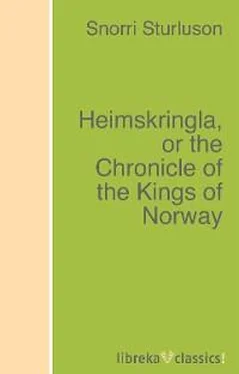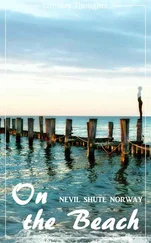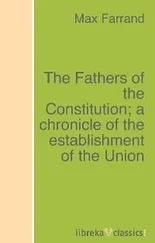Snorri Sturluson - Heimskringla, or the Chronicle of the Kings of Norway
Здесь есть возможность читать онлайн «Snorri Sturluson - Heimskringla, or the Chronicle of the Kings of Norway» — ознакомительный отрывок электронной книги совершенно бесплатно, а после прочтения отрывка купить полную версию. В некоторых случаях можно слушать аудио, скачать через торрент в формате fb2 и присутствует краткое содержание. Жанр: unrecognised, на английском языке. Описание произведения, (предисловие) а так же отзывы посетителей доступны на портале библиотеки ЛибКат.
- Название:Heimskringla, or the Chronicle of the Kings of Norway
- Автор:
- Жанр:
- Год:неизвестен
- ISBN:нет данных
- Рейтинг книги:3 / 5. Голосов: 1
-
Избранное:Добавить в избранное
- Отзывы:
-
Ваша оценка:
- 60
- 1
- 2
- 3
- 4
- 5
Heimskringla, or the Chronicle of the Kings of Norway: краткое содержание, описание и аннотация
Предлагаем к чтению аннотацию, описание, краткое содержание или предисловие (зависит от того, что написал сам автор книги «Heimskringla, or the Chronicle of the Kings of Norway»). Если вы не нашли необходимую информацию о книге — напишите в комментариях, мы постараемся отыскать её.
libreka classics – These are classics of literary history, reissued and made available to a wide audience.
Immerse yourself in well-known and popular titles!
Heimskringla, or the Chronicle of the Kings of Norway — читать онлайн ознакомительный отрывок
Ниже представлен текст книги, разбитый по страницам. Система сохранения места последней прочитанной страницы, позволяет с удобством читать онлайн бесплатно книгу «Heimskringla, or the Chronicle of the Kings of Norway», без необходимости каждый раз заново искать на чём Вы остановились. Поставьте закладку, и сможете в любой момент перейти на страницу, на которой закончили чтение.
Интервал:
Закладка:
33. OLAF MARRIES GYDA.
In autumn (A.D. 988) Olaf sailed from Scilly to England, where he put into a harbour, but proceeded in a friendly way; for England was Christian, and he himself had become Christian. At this time a summons to a Thing went through the country, that all men should come to hold a Thing. Now when the Thing was assembled a queen called Gyda came to it, a sister of Olaf Kvaran, who was king of Dublin in Ireland. She had been married to a great earl in England, and after his death she was at the head of his dominions. In her territory there was a man called Alfvine, who was a great champion and single-combat man. He had paid his addresses to her; but she gave for answer, that she herself would choose whom of the men in her dominions she would take in marriage; and on that account the Thing was assembled, that she might choose a husband. Alfvine came there dressed out in his best clothes, and there were many well-dressed men at the meeting. Olaf had come there also; but had on his bad-weather clothes, and a coarse over-garment, and stood with his people apart from the rest of the crowd. Gyda went round and looked at each, to see if any appeared to her a suitable man. Now when she came to where Olaf stood she looked at him straight in the face, and asked "what sort of man he was?"
He said, "I am called Ole; and I am a stranger here."
Gyda replies, "Wilt thou have me if I choose thee?"
"I will not say no to that," answered he; and he asked what her name was, and her family, and descent.
"I am called Gyda," said she; "and am daughter of the king of Ireland, and was married in this country to an earl who ruled over this territory. Since his death I have ruled over it, and many have courted me, but none to whom I would choose to be married."
She was a young and handsome woman. They afterwards talked over the matter together, and agreed, and Olaf and Gyda were betrothed.
34. KING OLAF AND ALFVINE'S DUEL.
Alfvine was very ill pleased with this. It was the custom then in England, if two strove for anything, to settle the matter by single combat (1); and now Alfvine challenges Olaf Trygvason to fight about this business. The time and place for the combat were settled, and that each should have twelve men with him. When they met, Olaf told his men to do exactly as they saw him do. He had a large axe; and when Alfvine was going to cut at him with his sword he hewed away the sword out of his hand, and with the next blow struck down Alfvine himself. He then bound him fast. It went in the same way with all Alfvine's men. They were beaten down, bound, and carried to Olaf's lodging. Thereupon he ordered Alfvine to quit the country, and never appear in it again; and Olaf took all his property. Olaf in this way got Gyda in marriage, and lived sometimes in England, and sometimes in Ireland.
35. KING OLAF GETS HIS DOG VIGE.
While Olaf was in Ireland he was once on an expedition which went by sea. As they required to make a foray for provisions on the coast, some of his men landed, and drove down a large herd of cattle to the strand. Now a peasant came up, and entreated Olaf to give him back the cows that belonged to him. Olaf told him to take his cows, if he could distinguish them; "but don't delay our march." The peasant had with him a large house-dog, which he put in among the herd of cattle, in which many hundred head of beasts were driven together. The dog ran into the herd, and drove out exactly the number which the peasant had said he wanted; and all were marked with the same mark, which showed that the dog knew the right beasts, and was very sagacious. Olaf then asked the peasant if he would sell him the dog. "I would rather give him to you," said the peasant. Olaf immediately presented him with a gold ring in return, and promised him his friendship in future. This dog was called Vige, and was the very best of dogs, and Olaf owned him long afterwards.
36. HARALD GORMSON SAILS AGAINST ICELAND.
The Danish king, Harald Gormson, heard that Earl Hakon had thrown off Christianity, and had plundered far and wide in the Danish land. The Danish king levied an army, with which he went to Norway; and when he came to the country which Earl Hakon had to rule over he laid waste the whole land, and came with his fleet to some islands called Solunder. Only five houses were left standing in Laeradal; but all the people fled up to the mountains, and into the forest, taking with them all the moveable goods they could carry with them. Then the Danish king proposed to sail with his fleet to Iceland, to avenge the mockery and scorn all the Icelanders had shown towards him; for they had made a law in Iceland, that they should make as many lampoons against the Danish king as there were headlands in his country; and the reason was, because a vessel which belonged to certain Icelanders was stranded in Denmark, and the Danes took all the property, and called it wreck. One of the king's bailiffs called Birger was to blame for this; but the lampoons were made against both. In the lampoons were the following lines:—
37. HARALD SENDS A WARLOCK TO ICELAND.
King Harald told a warlock to hie to Iceland in some altered shape, and to try what he could learn there to tell him: and he set out in the shape of a whale. And when he came near to the land he went to the west side of Iceland, north around the land, where he saw all the mountains and hills full of guardian-spirits, some great, some small. When he came to Vapnafjord he went in towards the land, intending to go on shore; but a huge dragon rushed down the dale against him with a train of serpents, paddocks, and toads, that blew poison towards him. Then he turned to go westward around the land as far as Eyjafjord, and he went into the fjord. Then a bird flew against him, which was so great that its wings stretched over the mountains on either side of the fjord, and many birds, great and small, with it. Then he swam farther west, and then south into Breidafjord. When he came into the fjord a large grey bull ran against him, wading into the sea, and bellowing fearfully, and he was followed by a crowd of land-spirits. From thence he went round by Reykjanes, and wanted to land at Vikarsskeid, but there came down a hill-giant against him with an iron staff in his hands. He was a head higher than the mountains, and many other giants followed him. He then swam eastward along the land, and there was nothing to see, he said, but sand and vast deserts, and, without the skerries, high-breaking surf; and the ocean between the countries was so wide that a long-ship could not cross it. At that time Brodhelge dwelt in Vapnafjord, Eyjolf Valgerdson in Eyjafjord, Thord Geller in Breidafjord, and Thorod Gode in Olfus. Then the Danish king turned about with his fleet, and sailed back to Denmark.
Hakon the earl settled habitations again in the country that had been laid waste, and paid no scat as long as he lived to Denmark.
38. HARALD GORMSON'S DEATH.
Svein, King Harald's son, who afterwards was called Tjuguskeg (forked beard), asked his father King Harald for a part of his kingdom; but now, as before, Harald would not listen to dividing the Danish dominions, and giving him a kingdom. Svein collected ships of war, and gave out that he was going on a viking cruise; but when all his men were assembled, and the Jomsborg viking Palnatoke had come to his assistance he ran into Sealand to Isafjord, where his father had been for some time with his ships ready to proceed on an expedition. Svein instantly gave battle, and the combat was severe. So many people flew to assist King Harald, that Svein was overpowered by numbers, and fled. But King Harald received a wound which ended in his death: and Svein was chosen King of Denmark. At this time Sigvalde was earl over Jomsborg in Vindland. He was a son of King Strutharald, who had ruled over Skane. Heming, and Thorkel the Tall, were Sigvalde's brothers. Bue the Thick from Bornholm, and Sigurd his brother, were also chiefs among the Jomsborg vikings: and also Vagn, a son of Ake and Thorgunna, and a sister's son of Bue and Sigurd. Earl Sigvalde had taken King Svein prisoner, and carried him to Vindland, to Jomsborg, where he had forced him to make peace with Burizleif, the king of the Vinds, and to take him as the peace-maker between them. Earl Sigvalde was married to Astrid, a daughter of King Burizleif; and told King Svein that if he did not accept of his terms, he would deliver him into the hands of the Vinds. The king knew that they would torture him to death, and therefore agreed to accept the earl's mediation. The earl delivered this judgment between them—that King Svein should marry Gunhild, King Burizleif's daughter; and King Burizleif again Thyre, a daughter of Harald, and King Svein's sister; but that each party should retain their own dominions, and there should be peace between the countries. Then King Svein returned home to Denmark with his wife Gunhild. Their sons were Harald and Knut (Canute) the Great. At that time the Danes threatened much to bring an army into Norway against Earl Hakon.
Читать дальшеИнтервал:
Закладка:
Похожие книги на «Heimskringla, or the Chronicle of the Kings of Norway»
Представляем Вашему вниманию похожие книги на «Heimskringla, or the Chronicle of the Kings of Norway» списком для выбора. Мы отобрали схожую по названию и смыслу литературу в надежде предоставить читателям больше вариантов отыскать новые, интересные, ещё непрочитанные произведения.
Обсуждение, отзывы о книге «Heimskringla, or the Chronicle of the Kings of Norway» и просто собственные мнения читателей. Оставьте ваши комментарии, напишите, что Вы думаете о произведении, его смысле или главных героях. Укажите что конкретно понравилось, а что нет, и почему Вы так считаете.












